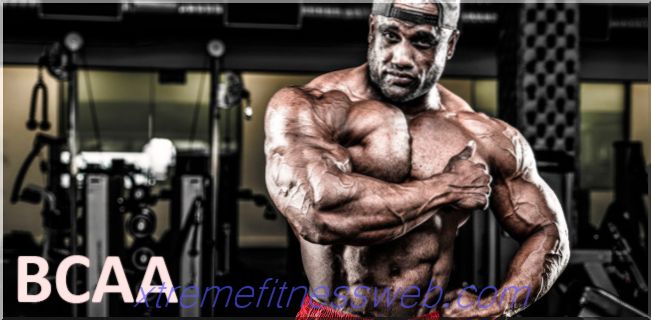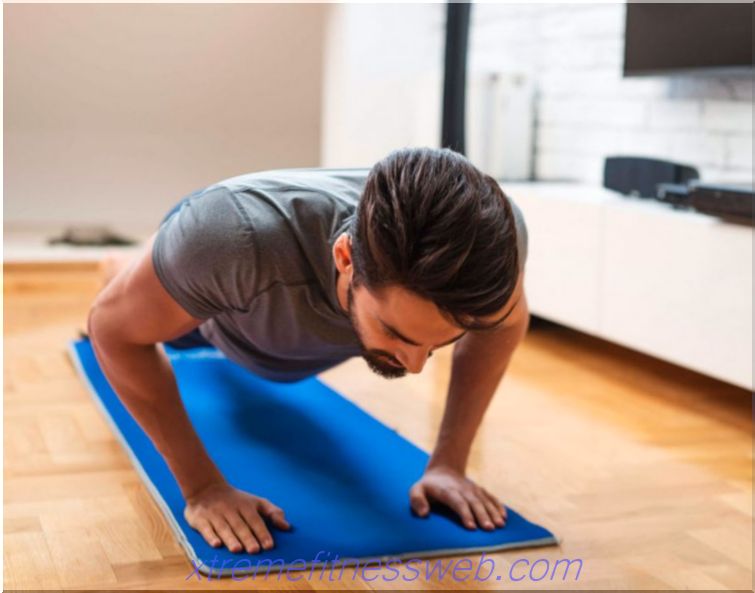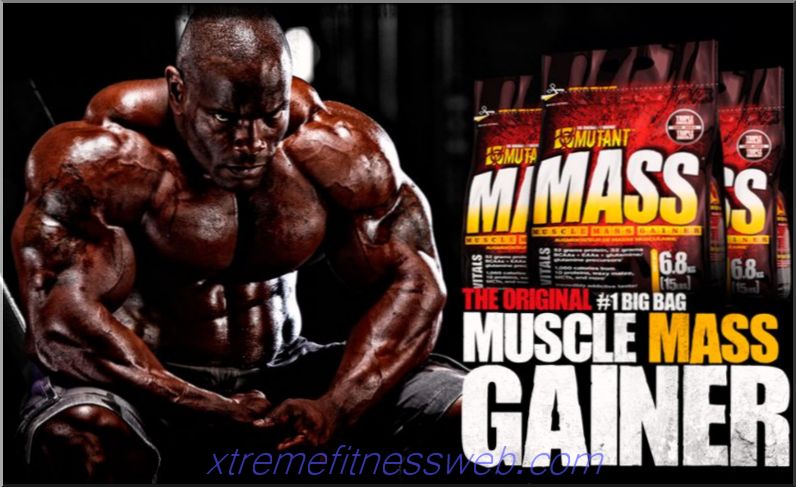- Types of traction and working muscles
- One dumbbell deadlift
- Belt pull of two dumbbells
- Dumbbell Traction Secrets
- Possible problems
- Stretching
- Elbow draft

Dumbbell traction to the belt helps eliminate muscle imbalances and develop the back. Through the use of dumbbells, it is possible to balance muscle development, and learn to pull equally with both halves of the back. This is a key movement for embossed back, developed latitudinal and harmonious posture. It can be performed with substantial weight or with light dumbbells. The exercise belongs to the legacy of bodybuilding of the old school, and is performed by many athletes on an ongoing basis.
Content
- 1 Types of traction and working muscles
- 2 traction of one dumbbell
- 2.1 On an incline bench
- 2.2 Errors during exercise
- 3 Thrust of two dumbbells to a belt
- 3.1 Dumbbell pull to the belt lying on the bench
- 3.2 Errors
- 4 Dumbbell Traction Secrets
- 4.1 Correct angles
- 4.2 In what position is the dumbbell held
- 4.3 Tilt with one hand
- 4.4 weights
- 5 Possible problems
- 6 Stretching
- 7 Pull with elbows
Types of traction and working muscles

The rods differ in the type adopted by the athlete's starting position:
- Draft in an inclination without support;
- Focusing on one knee on a bench;
- With belly support on a bench, horizontal or inclined
The main working muscle in all types of back pulls is the widest. Rhomboid, trapezoid, and biceps, plus the muscles of the forearm, also participate in the movement. The press acts as a stabilizer, in statics the muscles of the legs and buttocks work. There are some features of the exercise.
A tilt draft without a support is a complete analog of a rod tilt while standing. The only difference is that through the use of dumbbells, the athlete can completely balance both halves of the back. It is enough to turn on the press actively to eliminate distortions. The option when one half pulls the weight and the other only does the auxiliary work is excluded.
Traction in an emphasis on the bench requires a decent stretching from the athlete, and the skill of leveling the body due to the static tension of the abdominal muscles. Distortions in the pelvis, curvature of the lumbar spine, and the predominant development of any one half of the back can cause problems with this movement.
Traction with a support on the bench is an analogue of the traction of the T-bar, but with the complete exclusion of axial load. It can be used for physical rehabilitation and for those athletes who, due to health reasons, cannot perform other horizontal thrusts. Contrary to popular belief, it can be performed with intervertebral hernias and protrusions, but exclusively with a low weight and in a controlled manner.
One dumbbell deadlift

The traction of one dumbbell resting on a bench may vary in complexity of the exercise. It depends on the amplitude. If the athlete moves in full amplitude, and rests on a horizontal bench, the seat of which is parallel to the floor, his thrust will be maximally amplitude. Use for support of a rack with dumbbells, or benches with an inclined back reduces amplitude, and allows to work with easy cheating. This is not always acceptable, but can be used as an exercise option for a high-class athlete with significant muscle mass.
The starting position is a stand with a dumbbell in hand, with the shin resting on the bench, and with the support of the free hand of the same name. The pelvis should be aligned, the pelvic bones should be in the same plane with the plane parallel to the floor. If there is a bias in the pelvis, you need to move the supporting arm so that it disappears. The same applies to the athlete’s shoulders, at the start they should be in the same plane.
To take the starting position, the hand is weighed down. The back is stretched, while the displacement of the legs and pelvis should not be. Because mid-level athletes and beginners should not take too heavy dumbbells.
Then they begin to bring the scapula to the spine, and due to this, the latissimus dorsi muscle is reduced. Next, turn on the biceps of the arm, so as to bring the dumbbell to the waist. The necessary repetitions are performed, and the side changes.
In bodybuilding, it is customary to perform this exercise with the same weight on both halves of the back. In physical rehabilitation, options are possible in which the weight can be less by a spasmodic half, or even the movement is performed only in one direction, but with a minimum number of approaches and repetitions.
The exercise is quite complex, and is usually performed in 10 repetitions in 3-4 approaches with a working weight.
Important: rotation around the axis of the spine with a skid of a dumbbell behind the back is best avoided. This removes the load from the muscles, and allows you to lift the force of inertia. This approach is not valid in bodybuilding. If the athlete still chooses cheating, he should pay attention to the position of the hips and pelvic bones. Skewing in the pelvis is a clear signal that too heavy weight has been selected.
On an incline bench
A feature of this version of the starting position is that there is no certain universal algorithm for its adoption. The athlete himself must choose the optimal backrest, and stand so that his back bends, but there was no increased load on the lumbar. The basis for the correct starting position is the symmetrical position of the pelvis. Skewing means that part of the load when lifting weights will be worked out not by the back muscles, but by the legs, which is unacceptable.
The back of an inclined bench is set at an angle of 30 degrees, and rest on it with a forearm, while the knee is on the seat. It should be absolutely comfortable, no pain in the lumbar region or a feeling of twisting. The dumbbell is taken from the floor independently, or installed on the seat, and removed with a working hand.
The thrust is performed in a classic manner. From freely hanging athlete begins to bring the shoulder blade to the spine, and strain his back. Then he lowers the dumbbell to its original position, and repeats. The number of sets and reps for both halves of the back is identical.
Mistakes during exercise

Technical errors in both exercises are similar:
- "Nod" or lowering the head down . If the athlete brings his chin to the chest, he creates unnecessary tension in the cervical spine, which can lead to injury. With a bowed head, it is difficult to stretch weight due to muscle strength, many use inertia;
- The dumbbell does not move to the waist, but to the chest . This means that a lot of extra muscles are included - the arm is too bent at the elbow joint, the athlete does not control the work of the widest, and pulls only in a jerk. Sometimes you can see how athletes move their forearm perpendicular to the axis of the spine, and reach out due to the posterior bundle of the deltoid muscle. If this is not performed intentionally, then it is worthwhile to understand that the load from the back is removed;
- Weight rises jerkily . Too high a pace, strong pushing of the legs off the floor, and a turn around the axis of the spine are the main reasons that the athlete can not work out the muscles efficiently. This can cause injury if the weight is too heavy and can be permanently disabled. Most often with this technique there is a spasm of the trapezius muscle, its overload, and painful sensations in the area of the trapezium, neck and neck;
- The athlete’s back is round, it is impossible to reach the support with his hand . This option is the reason for the lack of stability in the lumbar spine. It can lead to serious injury, and cause the athlete to lose control of his body position. The option with a round back "works out", mainly biceps and trapezoid, so you should refuse it. If the back is rounded, you should try a higher support;
- Tremor supporting arms and legs . It is often said that these are weak muscles, but the problem can also be caused by the fact that the athlete simply does not know how to control the position of the body in space, and transfers too much weight to the supporting side. The problem can also be caused by an imbalance in the training plan, that is, overloading of the legs and muscles of the core;
- Start biceps . This movement almost completely excludes the back from work. It “steals” the load from the rhomboid muscles, and leads to the fact that the athlete shakes his hands only. To get rid of the problem, they suggest focusing on bringing the scapula to the spine. You can visualize your hand as a hook or support, which simply fixes the weight
Belt pull of two dumbbells

Exercise resembles a barbell draft in a tilted standing position. If an athlete already knows how to perform this craving, his task is simplified. It’s enough to pick up the weight of the dumbbells. Exercise allows you to work out your back, and does not overload the muscles of the legs. It is technically simpler than the version with traction based on the bench, since it requires almost no stretching.
When taking the starting position, it is important to grip so that the dumbbells do not hang on the athlete's fingers. The grip should be the same on both sides. The athlete performs a slight forward bend, universal starting - back tilt at 45 degrees. Then you need to bend your knees slightly so that you stand comfortably, and the load does not go into the biceps of the thigh.
Further, the exercise is carried out by reducing the shoulder blades, that is, the start is from bringing the shoulder blade to the spine, then the dumbbell is brought to the belt. The elbows move in a plane parallel to the spine. Retracting the forearm perpendicular to the spinal column is not recommended. The exercise is smooth, the movement should not be torn or jerky. The biceps bend just enough to bring the dumbbell to the level of the belt.
This exercise can be performed in the “on balance” version, that is, the pull of one dumbbell in an incline to the belt. This is a rarer option, it is used in power sports to balance the work of the athlete's half back. In bodybuilding, this option is quite rare, but it makes sense if it is difficult for an athlete to perform draft with the barbell on an incline and he tends to unbend too sharply during the movement of the barbell to the belt.
Dumbbell pull to belt lying on a bench

In this embodiment, the back is set so that the athlete can bring dumbbells to the belt due to the tension of the latissimus dorsi muscles. The task is complicated, since the legs only rest on the floor, and it will not work to stretch the weight due to a slight extension of the back. Many consider this traction to be an analogue of the T-bar thrust, but this is not entirely true. Weights are distributed absolutely evenly, and therefore it turns out to develop muscles harmoniously.
To complete this option, it is enough to make a 30-degree tilt, lie on your bench with your stomach, grab the dumbbells, and bring them to the belt, while pulling the shoulder blades to the spine and contracting the back muscles. Biceps should not pull the weight alone, the start is due to the reduction of the shoulder blades and the reduction of the widest. In this exercise, the rhomboid muscle also works additionally, but the trapezius muscle turns off due to emphasis and stabilization.
Mistakes

Insufficient inclination of the housing. If the inclination is too high, part of the load can be transferred to the trapezius muscles. This will lead to the fact that the back will not be worked out enough. The same thing happens when an athlete actively “pulls” the body, performing small amplitude lifts;
Too much weight. If the athlete can not reduce the shoulder blades in any version of traction in the slope, the weight is too large. In this case, “acceleration” of weight occurs due to biceps, which can lead to ligament injury;
Performing exercises in jerks. Jerks in full amplitude are not only a traumatic occupation, but also a technique in which the load goes into the body. When jerking, shock injuries are possible, as well as an increased load on the spine;
Breeding the elbows to the sides. Some athletes instead of wiring perform swings, this leads to the transfer of load to the back delta
Dumbbell Traction Secrets

Right angles
The wider the elbows are bred in the exercise, the more effectively the back delta is loaded. If the forearms go towards the ears, then the trapezius muscles are involved to a greater extent, and this angle is undesirable. When the elbows are a little closer to the body, the latissimus dorsi muscles are more involved.
In what position is the dumbbell held
You can hold the dumbbell vultures in the same plane, pulling together the shoulder blades, and leading the dumbbells to the belt. This traction will be similar to what is done with the barbell.
Tilt with one hand
This traction option is suitable for those who have a good stretch and have the ability to stabilize the back. You can tilt, lock the body due to static voltage, and pull the dumbbell to the belt in this position.
Weights
Weights are selected from low for beginners to medium. It is important to make a movement in pure technique without cheating in order to get the result in the back, and not in the biceps and triceps.
Possible problems

In case of injuries of the posterior bundle of the deltoid muscle, this movement should not be done. Rear deltas are included in any version of this traction, just to varying degrees.
Stretching
If the hip biceps are so stiff that it cannot be tilted, stretch the hip biceps, roll it on the roller before you start the exercise, but to begin to perform the movement in the supine position with the stomach resting on the bench.
Elbow draft
If the goal is to engage the posterior deltoid muscle bundles, you should take a lower weight of weights, and not swing the body.
So, leaning dumbbell traction is a good exercise for your back muscles and developing proper posture. It needs to be included in the training program regularly to supplement vertical traction.







